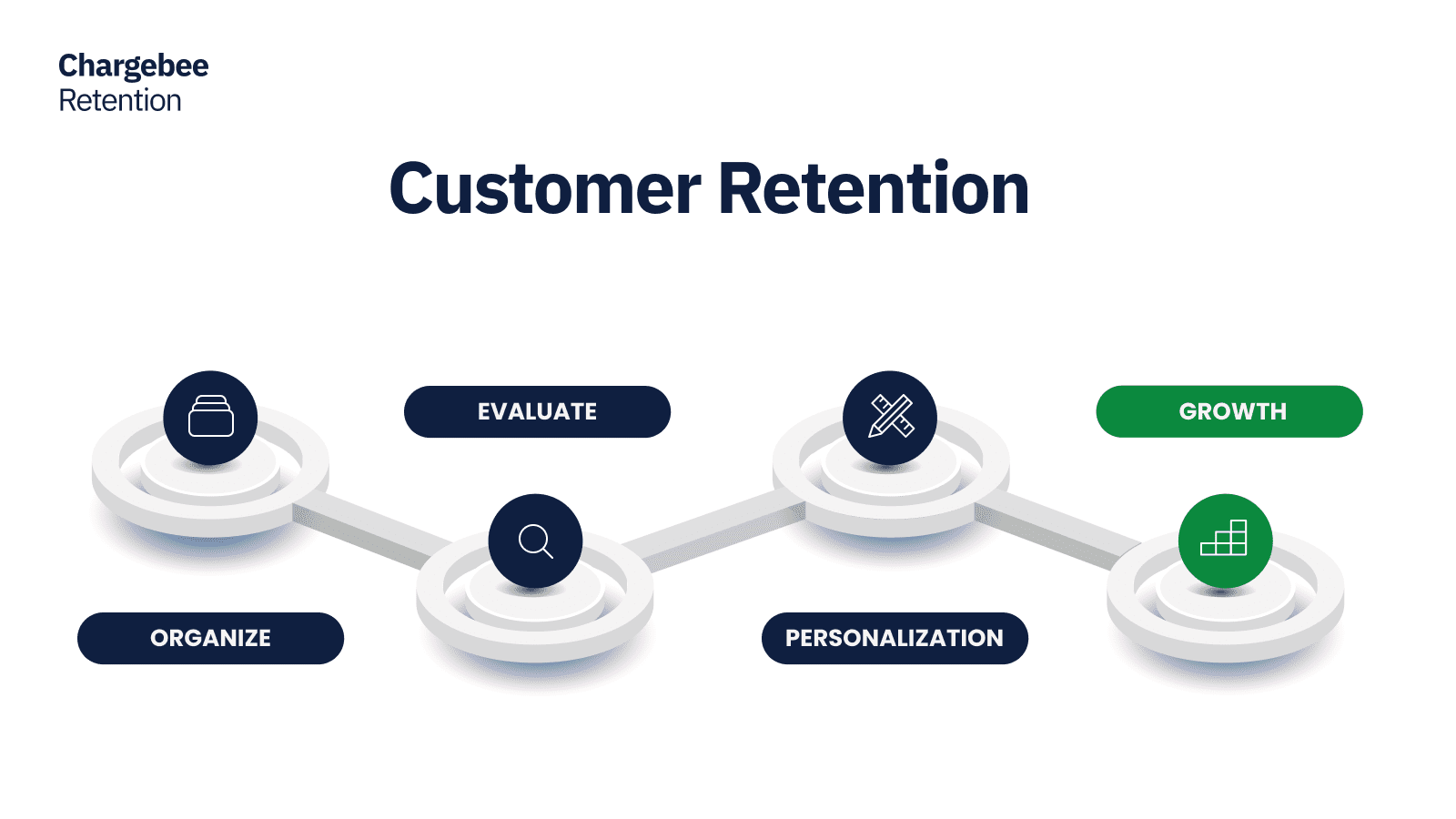Subscription businesses can’t survive on acquisition alone. It’s just not an efficient way to grow any more now that it’s at least 5X more expensive to acquire a customer than to retain one.
In today’s world, there’s more revenue to be earned after the initial purchase, so companies must do everything they can to extend the lifetime value of the customers they fought so hard to acquire. Here are three ways to grow your business utilizing customer retention.
1. Organize your teams around the customer relationship
A subscription business model requires proving a consistent return on investment (ROI) to your customers. You need to be set up to support customers in an ongoing relationship instead of a transactional moment. This means changing the way we sell products and the customer-facing leaders we hire and aligning to a churn goal.
It’s critical for companies to place just as much emphasis on retention as they do on acquisition. That means the sales organization must most likely be retrained to make sure customers buy and are successful for 6-18 months. Leadership in sales, marketing and beyond must be motivated and incentivized to optimize the entire customer lifecycle – not just to close new bookings or upsells and renewals.
When it comes to measurement, a single churn goal needs to be communicated from executive leadership to the rest of the company. The entire organization needs to commit to actively showing customers how to understand and love what they’re buying in order to keep them coming back. In my experience, this is much easier said than done.
While every team has an impact on retention, this can lead to ambiguity around metrics and how the business is viewing success. Every department’s approach to keeping customers happy and reducing churn is going to look different. This is why a companywide churn KPI should be set at the top, so individual departments can develop their own tactics to help realize the shared goal.
2. Learn from your customers at the point of cancellation
Most companies are all in when it comes to acquisition. They mobilize teams around the stages of their funnel, optimize campaigns based on what’s working, and are laser-focused on conversion metrics. This same thinking can be applied to customer churn.
A churn funnel begins at the point of cancellation and is a personalized experience based on unique customer attributes, like account type, billing plan, geography, length of account, and so on. The goal of a churn funnel is to convert customers back to your business. You optimize for giving customers what they need in order to retain them.
Most companies are familiar with exit surveys. They’re considered best practices for product and customer success teams to better understand why customers leave and then make efforts to improve. But companies rarely go one step further by attempting to influence customers to stay at the point of cancellation. They’re missing an opportunity to deliver proactive customer retention given that 15- 30% of customers cancel due to resolvable issues, like a poor onboarding experience or not being able to figure out a feature.
As customers move down the funnel toward canceling their accounts, companies should attempt to satisfy unmet needs in the moment by making offers based on the reason for cancellation. Despite all of the labels, definitions and theories, cancellations come down to a handful of reasons related to product concerns, inability to execute, changing needs, pricing concerns, poor service and internal/company changes. Many of these issues can be resolved in the moment to reduce churn. Specifically, the ability to re-onboard, receive a discount or find needed product information can influence a customer to stay
Cancellation isn’t about finality. It’s more of a signal from customers that their expectations aren’t being met. It’s not too late to step in and help your customers find what they were looking for when they signed up for an account in the first place. Of course, there will be some customers who can’t be saved, but a churn funnel is still valuable. Gathering data and feedback at this critical moment enables your teams to make improvements to reduce churn in the future.
3. Make retention personal
A successful retention strategy operates at scale but isn’t impersonal. This is a challenge. The customer base isn’t uniform for most high-volume subscription businesses, specifically in the consumer industry. A large subscriber base is a collection of people who have unique opinions and can’t be treated with a one-size-fits-all approach (not for much longer, at least).
Personalization of the customer experience relies on accurate information. You must organize data from multiple sources, like demographic details, product usage, payment histories, and support interactions to develop a full view of your customer. When companies operate from one source of truth for their customer data, it takes less time for companies to see trends and take action. It also helps teams be on the same page when it comes to tracking progress against the companywide churn goal.
Next, define the criteria that indicate when your customers are being successful (e.g., they watch a certain number of shows per week, use a combination of features, or reach a certain maturity level). Then align your engagement tools to push notifications and customer teams to engage based on this success value.
You need to be doing all of this while also spending lots of time talking to customers. Hearing their raw input and conducting surveys to capture feedback in their own words will give you the qualitative context you need to make sense of churn numbers and trends.
If you’re not retaining your users, it won’t help much to pour more water into a leaky bucket, no matter how robust your channel strategy or great your conversion metrics look. Growth without retention just won’t expand your customer base substantially. Retention may not be as glamorous as acquisition, but it’s no less powerful in driving business-critical growth for subscription and SaaS companies today.

